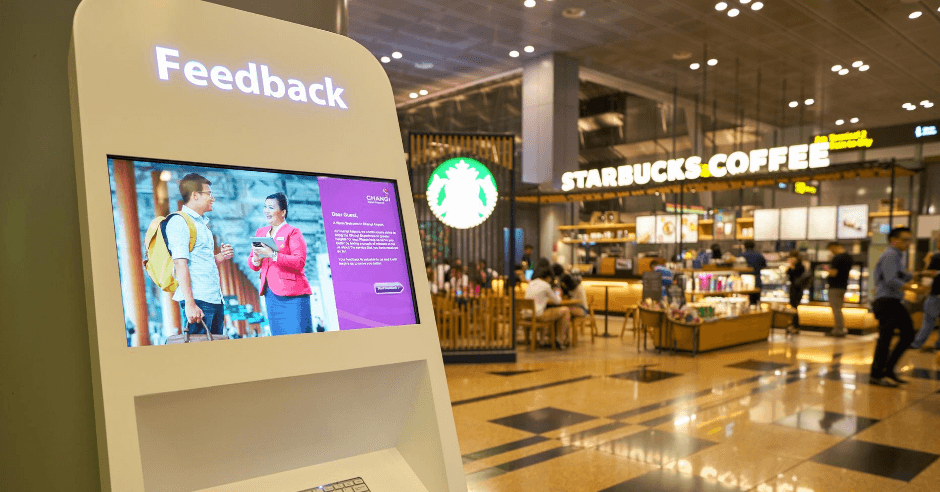As the travel and tourism industry gears up for the annual influx of eager travellers during peak seasons, the significance of customer feedback cannot be overstated. In an era where travellers have a plethora of options and demands, understanding their experiences is crucial for adapting and optimizing services. In this blog, we will explore the role of Passenger Feedback Software in preparing the travel and tourism sector for peak seasons, delving into the importance of passenger satisfaction surveys, and drawing parallels with the use of online survey tools in the restaurant industry.
Enhance your travelers’ experience during peak seasons.❤️
Leverage our Passenger Feedback Software for actionable insights today!
The travel and tourism industry is a dynamic and ever-evolving landscape, where customer satisfaction is the key to unlocking sustainable growth and success. As peak seasons approach, organizations in this sector face the challenge of anticipating and meeting the ever-increasing demands of their clientele. In this pursuit, customer feedback emerges as an invaluable resource, providing insights that enable businesses to tailor their offerings and elevate the overall travel experience.
The Significance of Customer Feedback in Peak Season Preparation
Peak seasons in the travel and tourism industry often represent periods of heightened demand and operational pressure. Without comprehensive customer feedback, businesses may struggle to identify and address potential bottlenecks or areas of dissatisfaction, leading to a decline in customer satisfaction and a potential loss of revenue.
Customer feedback, gathered through surveys, reviews, and social media interactions, offers a wealth of information that can be harnessed to prepare effectively for peak season. This feedback can reveal:
Optimizing Customer Experiences:
During peak seasons, the volume of travelers intensifies, making it imperative for businesses to optimize customer experience. Passenger satisfaction is not only a benchmark for success but also a driver of customer loyalty, influencing repeat business and positive word-of-mouth.
Identifying Pain Points:
Understanding the pain points and challenges faced by passengers is essential for refining services. Whether it’s long queues at airports, delays, or issues with accommodations, identifying these pain points through customer feedback allows businesses to address them proactively.
Adapting to Changing Preferences:
Travelers’ preferences and expectations evolve, and businesses must adapt to these changes. Passenger Feedback Software provides a mechanism for gauging shifting preferences, allowing companies to tailor their services to meet the diverse needs of modern travelers.
Enhancing Operational Efficiency:
Peak seasons often strain operational resources, leading to potential bottlenecks. Customer feedback acts as a valuable tool for enhancing operational efficiency by highlighting areas that require additional resources, staff training, or process improvements.
The Role of Passenger Feedback Software:
In the quest for continuous improvement and excellence in passenger experiences, the deployment of Passenger Feedback Software emerges as a strategic necessity. Here’s how this technology plays a pivotal role in preparing for peak seasons:
Real-time Insights:
Passenger Feedback Software provides real-time insights into customer experiences. By capturing feedback as it happens, businesses can promptly address issues and capitalize on positive experiences, contributing to overall customer satisfaction.
Holistic Feedback Channels:
These software solutions offer diverse channels for gathering feedback, including mobile apps, email surveys, and in-flight questionnaires. This multi-channel approach ensures that businesses capture feedback at various touchpoints, providing a comprehensive view of the passenger journey.
Customizable Surveys:
Passenger satisfaction surveys within the software are customizable, allowing businesses to tailor questions based on specific aspects of their services. Whether it’s gauging in-flight entertainment satisfaction or evaluating the efficiency of baggage handling, these surveys can be fine-tuned to extract actionable insights.
Benchmarking and Trends Analysis:
Cuatomer Feedback Software enables benchmarking against industry standards and trends analysis. This comparative data empowers businesses to assess their performance in the context of competitors and industry benchmarks, identifying areas where they excel and areas that require attention.
Integration with Operational Systems:
Integration with operational systems allows for a seamless flow of information. For instance, integrating Feedback Software with airline reservation systems or hotel management systems ensures that feedback is directly linked to specific services and transactions.
Predictive Analytics:
Advanced Feedback Software often incorporates predictive analytics, helping businesses anticipate issues before they escalate. This proactive approach allows for preventive measures, ensuring a smoother operation during peak seasons.
Passenger Feedback Software in Action:
Let’s delve into a scenario to understand how Feedback Software can be instrumental in shaping the passenger experience during peak seasons.
Scenario: Airline X Prepares for Summer Travel Surge
Airline X, a leading carrier, anticipates a significant surge in passenger traffic during the summer travel season. To ensure a positive experience for travelers and address potential challenges, the airline deploys a comprehensive Feedback Software solution.
Implementation Steps:
Pre-Flight Satisfaction Surveys:
Prior to departure, passengers receive satisfaction surveys via the airline’s mobile app. These surveys cover aspects such as check-in experience, seat comfort, and pre-flight services.
In-Flight Questionnaires:
During the flight, passengers have the option to complete in-flight questionnaires through the entertainment system. These questionnaires assess in-flight services, cabin crew interactions, and overall satisfaction.
Post-Flight Email Surveys:
Following the journey, passengers receive post-flight email surveys, providing an opportunity to reflect on the entire travel experience. Questions may include feedback on baggage handling, immigration processes, and overall impressions of the airline.
Integrated Analytics Dashboard:
The airline’s operational teams access an integrated analytics dashboard that consolidates feedback from various sources. This dashboard highlights areas of excellence and pinpoints specific pain points that need attention.
Proactive Issue Resolution:
Armed with real-time insights, the airline proactively addresses identified issues. For instance, if a recurring theme in feedback is related to baggage delays, the airline implements measures such as additional staff during peak times or enhanced baggage tracking systems.
Continuous Improvement Initiatives:
The predictive analytics component of the traveller Feedback Software identifies potential challenges for the upcoming weeks. This allows the airline to implement continuous improvement initiatives, such as staff training programs or service enhancements, to meet the expected surge in passenger traffic.
By leveraging traveller Feedback Software in this scenario, Airline X not only ensures a positive experience for travelers during the summer travel season but also sets the stage for long-term customer loyalty.
Parallel Insights: Online Survey Tools for Restaurants
Drawing parallels between the travel and tourism industry and the restaurant sector, online survey tools play a similar role in capturing customer feedback and shaping operational strategies. Let’s explore how these tools contribute to the success of restaurants, aligning with the concept of Passenger/ customer Feedback Software.
Diverse Touchpoints for Feedback:
Just as Feedback Software captures insights at various touchpoints in the travel journey, online survey tools for restaurants provide multiple avenues for feedback. This includes post-dining email surveys, mobile app feedback, and even in-restaurant tablet surveys.
Customizable Restaurant Surveys:
Similar to customizable surveys in traveller Feedback Software, online survey tools for restaurants allow establishments to tailor questions based on specific aspects of the dining experience. This customization helps extract actionable insights for improving service quality.
Real-time Feedback Analysis:
Both industries benefit from real-time feedback analysis. Restaurants, like airlines or hotels, can promptly address issues raised by customers, ensuring a positive dining experience, and preventing potential negative reviews.
Benchmarking and Trends Analysis:
Online survey tools for restaurants enable benchmarking against industry standards, similar to Passenger Feedback Software. Analyzing trends and comparing performance with competitors helps restaurants stay competitive and responsive to evolving customer expectations.
Integration with Point-of-Sale Systems:
Integration with point-of-sale systems allows restaurants to link feedback directly to specific dining experiences. This integration ensures that feedback is contextually relevant and enables restaurants to address issues related to service, food quality, or ambiance.
Predictive Analytics for Operational Efficiency:
Forward-thinking online survey tools may incorporate predictive analytics for restaurants, aiding in anticipating challenges and enhancing operational efficiency. For instance, predicting peak dining hours or popular menu items helps restaurants allocate resources effectively.
Conclusion:
As the travel and tourism industry braces for peak seasons, the role of Feedback Software becomes increasingly pivotal. By capturing real-time insights, adapting to changing preferences, and proactively addressing customer concerns, businesses in this sector can elevate the passenger experience and ensure a seamless operation during peak periods. Drawing parallels with the use of online survey tools in the restaurant industry, it’s evident that customer feedback, regardless of the sector, is a catalyst for continuous improvement and success. In the interconnected worlds of travel and dining, technology-driven feedback mechanisms serve as the compass, guiding businesses towards delivering exceptional experiences and fostering lasting customer loyalty.







